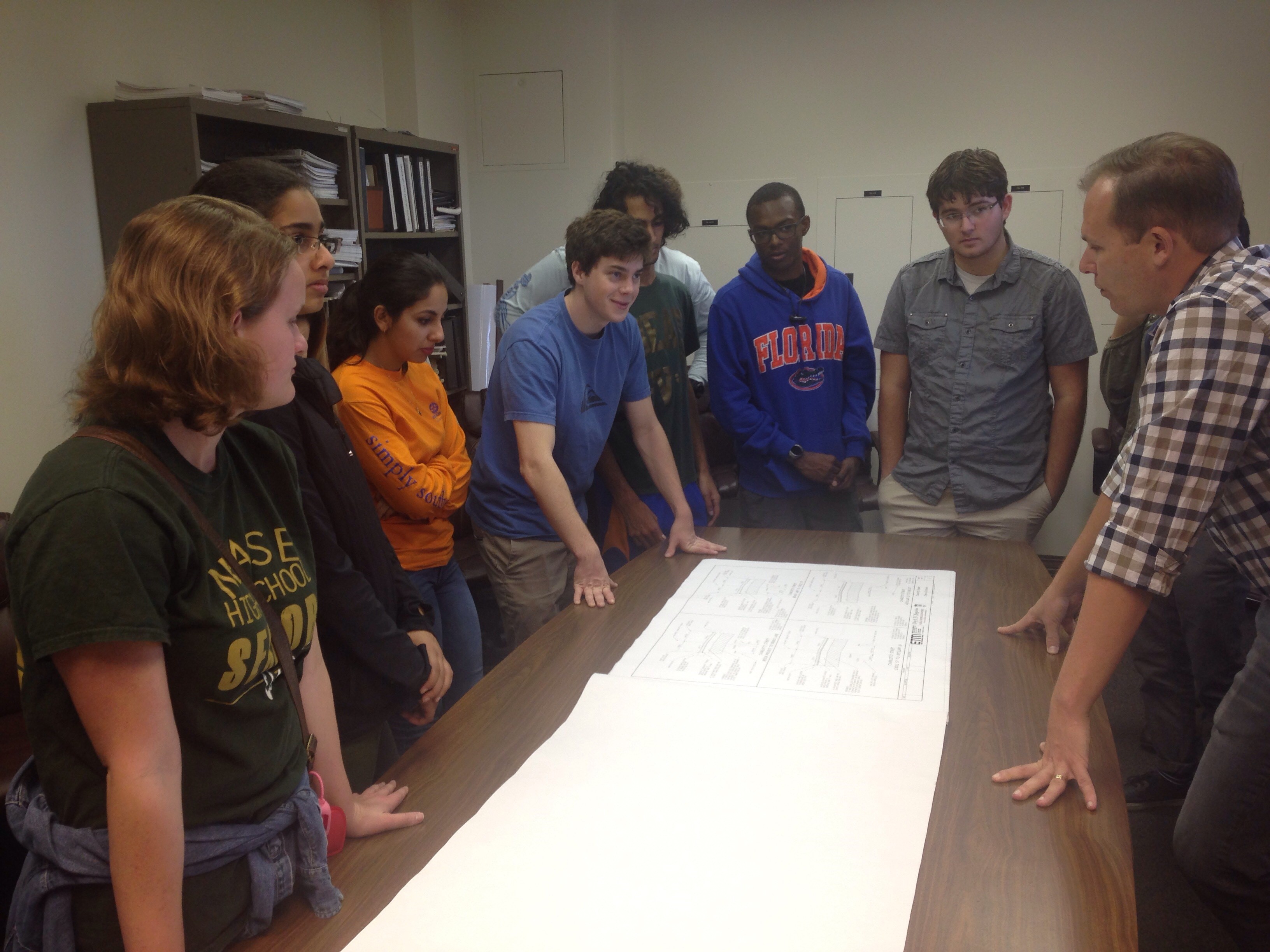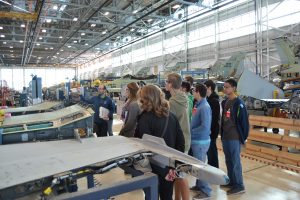Students in the Stellar Academy of Engineering enjoyed some unique field trips in January and February. On January 31st, Engineering Academy students traveled to the Fleet Readiness Center Southeast, located at Naval Air Station Jacksonville, to tour the F/A-18 Hornet Strike Fighter Aircraft Production Line. The trip was organized by Advisory Board member Alexis Alexandris, and allowed our students to get a first-hand look at how the jets are maintained and repaired. Students also got to visit the Industrial Manufacturing Division and the materials labs; at each stop our students had the chance to speak with engineers. The students learned how military aircraft are dismantled for repairs, how new parts are created (including via 3D printing), and how engineers and scientists work to diagnose problems with the aircraft.
On February 9th, our Principles of Engineering students visited St. Augustine’s City Hall to learn how civil engineering and local government work together. In a field trip organized by Advisory Board member Reuben Franklin, a civil engineer with the City of St. Augustine Public Works department, students learned how engineers, archeologists, and landscape architects often come together when renovations take place in historic St. Augustine. At City Hall students had the chance to look over plans for an upcoming $300,000 water main construction project on Charlotte Street and learn about how engineers utilize GIS software. Then, Mr. Franklin led the group on a tour of downtown St. Augustine. They stopped at Aviles Street, the oldest street in the United States, where they learned about some of the history behind the street, and a former renovation project. Next, the group met up with the City Archeologist, Carl Halbirt, who took the students to Charlotte Street, where burial sites were recently discovered both under the street, and under a neighboring business. The students were quite surprised to get such a close up look at the recently discovered bones of some of St. Augustine’s earliest colonists. The students learned how archeologists work with engineers to ensure that historical sites are documented and disturbed as little as possible when construction or renovation projects take place. Finally, the students learned about some of the challenges associated with the Charlotte Street water main project, and then took a stroll over to the seawall, where they learned about the engineering behind the seawall, and how it held up during Hurricane Matthew.




